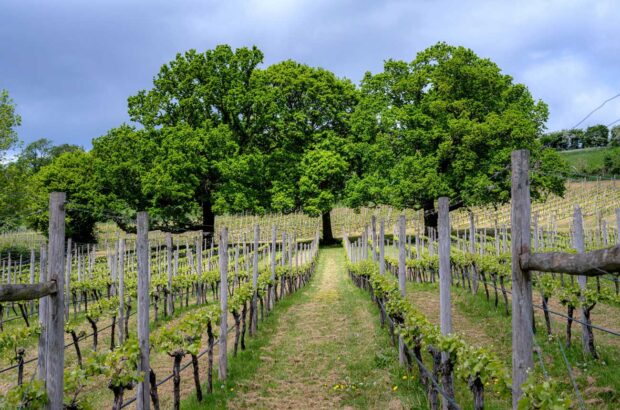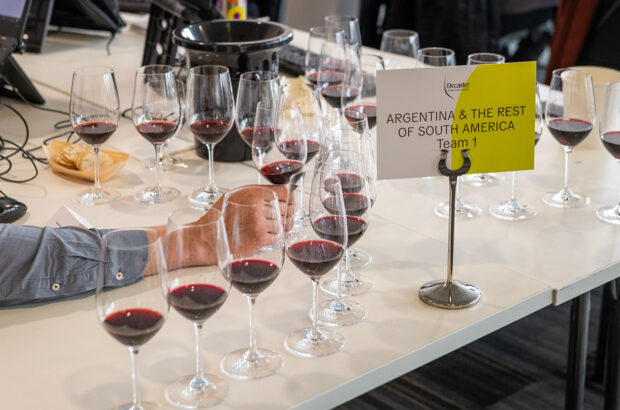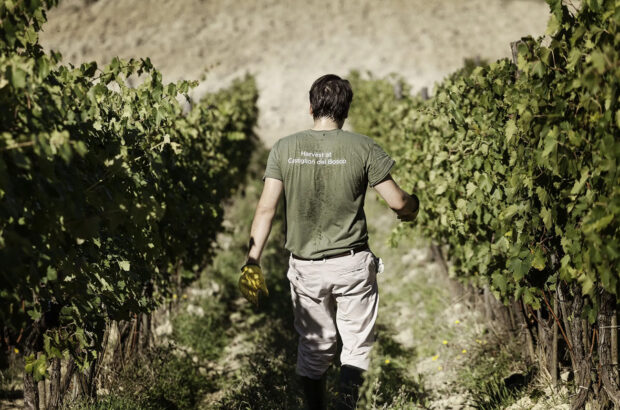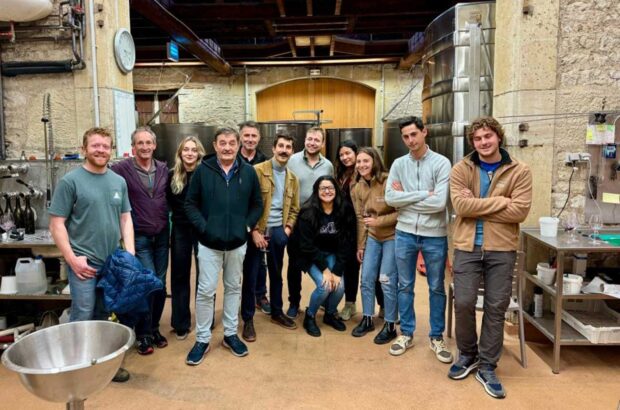The wine scene in Turkey is on the cusp of change, with a growing movement to revive indigenous grapes making it one of the most exciting new frontiers in the world of wine.
It’s also a country of contradictions, with the world’s fifth-largest vineyard area (410,000ha in 2022, according to OIV), but only 3% of the annual grape harvest used for winemaking (OIV 2019 report); a country where a 2013 legal move banned any promotion of alcohol, but which has managed to snag more than 1,000 medals and commendations at the Decanter World Wine Awards since it started in 2004.
To understand Turkey’s unique viticulture, it’s essential to look at its past. Southeastern Anatolia is now considered one of the two prime locations in which the grapevine was first domesticated, around 9,500-5,000 BCE (Science, March 2023). In the seven geographical regions that now compose modern Turkey, viticulture existed continually throughout the centuries, and although alcohol was prohibited during the Ottoman era (14th century through to 1922), non-Muslim communities were allowed to manufacture and trade it.

Credit: JP Map Graphics
From state to private
The breaking point occurred in 1923 when, during the aftermath of World War I and the Turkish war of independence, Armenian and Greek communities (the country’s main wine producers) were forced to migrate. Vineyards and wineries were abandoned and failed efforts to revive them during the era of the newly formed secular Turkish Republic eventually led to a state-run monopolistic market for much of the 20th century. It wasn’t until the 1990s that Turkey’s first boutique vineyards emerged, planting international grape varieties, often under the guidance of foreign consultants.
‘In the early 1990s, Turkey’s oldest wine producer Doluca began to produce fine wines from international grapes,’ explains Levon Bağış, one of Turkey’s foremost wine experts. ‘Around the same time, Kavaklıdere, another long-established producer, started to produce local Öküzgözü, Boğazkere and Kalecik Karası wines. We can say that these two events were milestones in Turkey’s modern winemaking story.’
Bağış co-founded Yaban Kolektif, a nomadic viticulture project that endeavours to return endangered grape varieties into commercial activity and save them from extinction. ‘Nowadays, small and large producers are focusing on native varieties – this and the natural wine movement have brought real excitement to Turkish winemaking,’ he says.
Varietal treasure trove
According to the Tekirdağ Viticulture Research Institute, Turkey has 1,435 grape varieties, most of which are grown on old vines. However, for a mostly Muslim country, where the annual average wine consumption is less than one litre per capita, grapes don’t always convert into wine. The vast majority are either consumed fresh or made into molasses, raisins, vinegar or rakı (Turkey’s popular aniseed-flavoured spirit).
‘I say thank you to the molasses and the raisins for protecting and maintaining these indigenous grapes,’ says Sabiha Apaydın Gönenli, wine director of Istanbul’s one-star Michelin restaurant Mikla, co-founder of Heritage Vines of Turkey (@heritagevinesofturkey) and founder and organiser of the annual wine conference Kök Köken Toprak. ‘You can take a shoot from these historic vines and plant it somewhere else and it will flourish.’
Apaydın continues: ‘When we began our research with Heritage Vines of Turkey, there were about 20 local grape varieties used commercially. We have managed to increase this number to 65. What we typically find are not vineyards but gardens – a hectare or less in size, but all of them with historic gobelet vines.’
Regions & revival

Urla Şarapçılık (see Producer section, below)
It’s difficult to be exact, but currently Turkey is home to about 185 wine producers. Among its most important viticultural regions are, in the country’s centre, Cappadocia, known for its white Emir grape; Tokat, where white Narince grapes are grown; and Ankara, where the red Kalecik Karası grape reigns.
Further east, in Anatolia’s Elazığ and Diyarbakır provinces, the key varieties are Öküzgözü and Boğazkere, both red. Along the Aegean coast in the west, in Izmir, the Urla district has recently been in the limelight with its vineyard route connecting nine producers (see Vineyards GoTürkiye). And in the Marmara region in the far northwest, around the inland Sea of Marmara, Kırklareli, Tekirdağ and Çanakkale are also important areas for the production of both international and local grapes.
However, newly emerging regions, such as the vineyards at 1,800m altitude on the edge of lake Van in Eastern Anatolia, are just beginning to be discovered as demand and curiosity for native grapes grow. Thanks in part to WSET (Wine & Spirit Education Trust) educators in Turkey providing training for thousands of young people, and the increased use of social media to promote Turkish wine, a new community focused on dynamic, local and quality-oriented wine production has emerged.
For example, one of the Heritage Vines of Turkey projects has focused on the revival of the Silifke and Mut districts (see map), where ancient vineyards thrive in challenging and non-irrigable sloped terrains and Aküzüm (white), Gök (white) and Patkara (red) varieties are harvested by local villagers. The local vineyard Tasheli Wines has been working with these grapes for years and is making a name for itself. Established vineyards such as Chamlija, Diren Wines, Doluca, Kayra, Suvla, Urla Winery and 7 Bilgeler have also supported the research by producing wines from these newly discovered local grapes.
How they taste: 11 heritage Turkish grapes at a glance
White
Aküzüm Thin-skinned variety that produces an aromatic bouquet with notes of pear and linden flowers.
Gök Energetic whites that deliver pear and golden apple notes in their youth, evolving over time into citrus aromas with herbal accents. Wines are medium-weight with a juicy, marked salinity on the aftertaste.
Hasandede Thin-skinned variety delivering flavours of orange zest, red apple, pumpkin and pear.
Mezron & Kerküş Two grapes commonly used together in field-blend wines. Notes of apple, dried mulberry and quince jam.
Sıdalan Pale gold, with notes of flowers and citrus fruit, a strong mineral core and a salty aftertaste.
Red
Acıkara A thick-skinned grape producing wines with sour cherry and black pepper aromas.
Foça Karası Notes of strawberry and quince.
Karalahana Thick skins and high tannins. Notes of plums, cherries and raspberries.
Merzifon Karası Aromas of red plum, cherry and clove.
Patkara Vibrantly fruity, dark purple-coloured wines with aromas and flavours of plum and black cherry, and earthy undertones. Patkara makes medium-bodied wines with rounded tannins and sustaining acidity.
Fascinating potential

Fulya Akinci. Credit: Heraki
‘Even though Turkey is not widely recognised in the wine world, as two oenologists we were aware of the value of these lands,’ says Fulya Akinci (@fulyaakinci), who met her spouse and business partner José Hernandez-Gonzalez while studying oenology in Bordeaux. ‘It’s a vast country, encompassing a wide range of geographical features, and still boasts a rich variety of grapes. What led us here was our belief in the potential of these soils and our eagerness to bring it to light.’
Their estate Heraki (@heraki_wines), founded in 2019, produces monovarietal wines from 35- to 80-year-old dry-farmed bush vines of Sultaniye, Çal Karası and Boğazkere grapes from Çal in Denizli province, as well as Gök, Patkara and Karasakız (red) grapes from the Bayramiç region in the Çanakkale province, with the support of the Heritage Vines of Turkey project.
Gizem Billur Duyar created Kerasus Wines (@kerasuswine) in 2019 to revive the indigenous grapes of the Black Sea region. She worked under the mentorship of Udo Hirsch and Hacer Özkaya, founders of Gelveri Manufactur in Cappadocia, the first producer to make natural wines from indigenous grapes fermented and aged in original Roman and Byzantine-era amphorae. Working with married vines (vines that cling to trees for support), Duyar helps villagers to harvest their garden-grown grapes, making wines from them using amphorae specially made by a master artisan in Cappadocia.
‘Married vine is an ancient viticulture technique and aims to explain the relationship between vines and the trees they embrace,’
says Duyar. ‘Even though the vine belongs to the ivy family, it does not harm the tree. They live a life together. Married vines are abundant in the Black Sea region.’
Another vineyard dealing mainly with the production of indigenous grapes is Paşaeli, founded by Seyit Karagözoğlu in 2000. Focusing on grape varieties close to Paşaeli’s winery in Kemalpaşa, İzmir, Karagözoğlu discovered the thin-skinned red grape Karasakız, turning it into an elegant wine by 2009 – convincing domestic consumers who were used to big and bold Bordeaux wines that a light-coloured red was just as enjoyable on the palate.

Gizem Billur Duyar of Kerasus Wines during harvest in Tokat, in Turkey’s Black Sea region
Deserved recognition
With its minimalist concrete structure rising above the vines, and part of the newly formed Çal Bağ Yolu wine route, Kuzubağ (@kuzubagwinery) focuses on reviving the native Çal Karası and Sultaniye grapes, as well as, more recently, the Acıkara grape from Antalya.
‘When Çal Karası was awarded its first international gold medal, the locals celebrated with us,’ says Aslı Kuzu, one of the country’s youngest female winemakers. ‘We think that anything is possible if we believe in our own grapes and introduce them correctly.’
In the well-heeled central Istanbul residential area of Nişantaşı, Foxy is one of the city’s only wine bars focusing on local wines. Co-opened by none other than Levon Bağış, the bar does its best to educate wine lovers, feeding their curiosity for the many native grapes of this vast country. ‘I think no future is possible other than Turkish wine producers focusing primarily on native grape varieties,’ says Bağış. ‘We may need a few lifetimes to discover all the grapes that are grown in Turkey and to reveal their potential. But it’s worth it.’
Turkish wines available in the UK or US
Doluca, Tuğra Öküzgözü: UK, £15.30 Taste Turkey, VinoTurco
Kavaklıdere, Selection Narince-Emir: UK, £12.69 NJoy Catering – US, $16-$18 Potomac Wines, Wine & Food Mart
Kavaklıdere, Selection Öküzgözü-Boğazkere: UK, £12.69 NJoy Catering – US, $22 Garfield’s Beverage, Potomac Wines
Paşaeli, 6N Karasakız: UK, £24 Graft Wine Co – US, $21 Skurnik Wines
Vinkara, Yaşasın Kalecik Karası Sparkling Brut: UK, £27.20 Taste Turkey – US, $POA Absolute Wine & Spirits
Vinkara, Kalecik Karası: UK, £14.30 Taste Turkey – US, $22 Astor Wines & Spirits
Five Turkish producers to look out for

Turkish sculptor Seçkin Pirim’s Gate of Heaven, marking the entrance to the Porta Caeli estate in Eceabat
The limited domestic market in Turkey results in low production volumes. Coupled with high taxes imposed by the state, this means there is currently a low export rate for wines from Turkish boutique vineyards. But next time you take a trip to Turkey, it’s worth seeking out the following estates.
Arcadia Bağları Lüleburgaz, Kırklareli
Cultivates local and international grapes on an estate which also features the Bakucha Vineyard Hotel, with its own restaurant and spa.
Barbare Yazır Köyü, Tekirdağ
@barbarevineyards
A little west of Istanbul, Barbare focuses on GSM and Bordeaux-style wines and also has its own guesthouse with 50 rooms.
Eskibağlar Sivrice, Elazığ
@eskibaglar
A family-owned winery and a real ‘middle of nowhere’ gem with a boutique hotel inside a traditional stone masonry house.
Porta Caelı Eceabat, Çanakkale
Produces Bordeaux-style wines. The estate is also home to a luxury hotel with its own collection of contemporary art.
Urla Şarapçılık, İzmir
Part of the Urla Vineyard Route, this estate cultivates a large range of French and local grapes, the latter including the revived Urla Karası. Also includes a boutique hotel.












